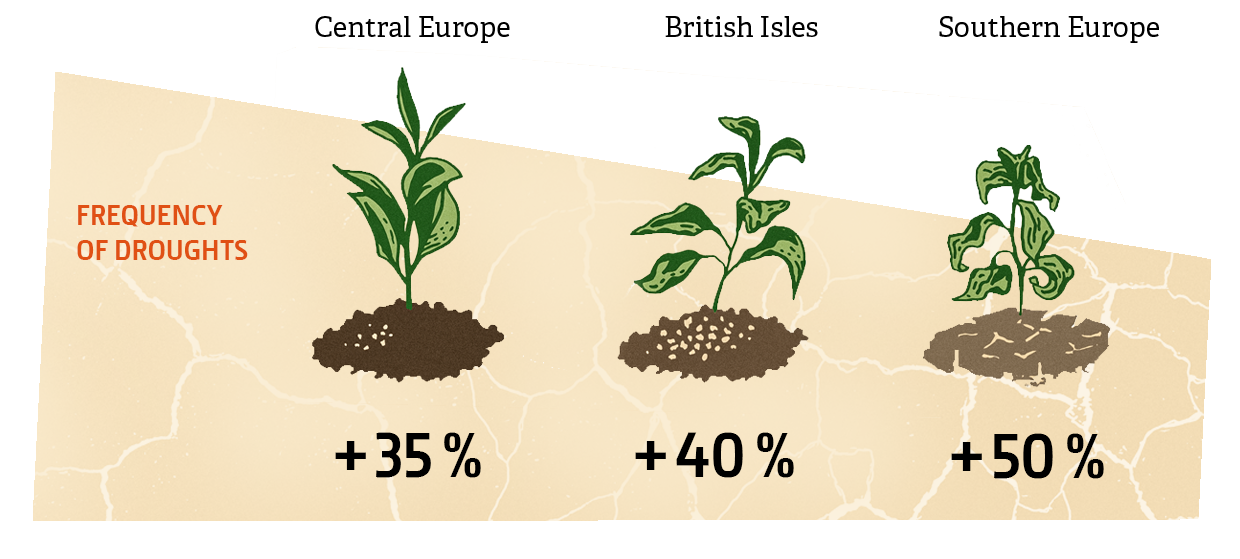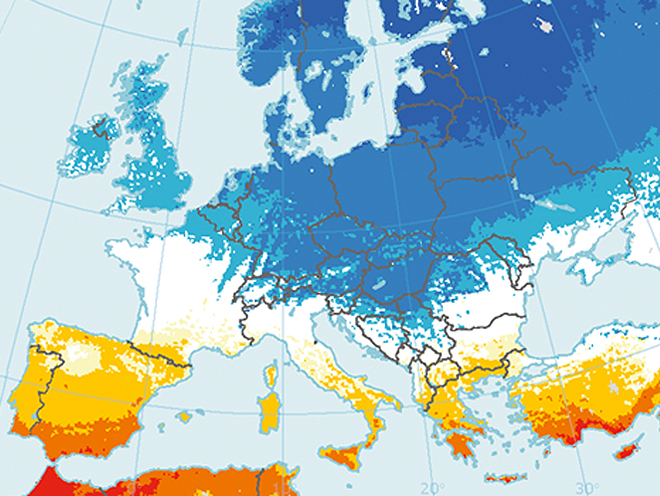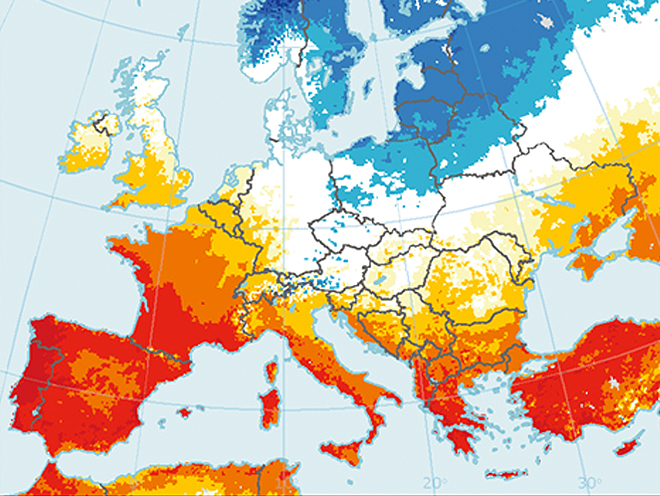In large parts of Europe, there will continue to be sufficient precipitation for plants in the future. At the same time, climate projections show a higher frequency of droughts – in almost all European regions. Sustainable rainwater storage and even more efficient irrigation will therefore become increasingly important for the competitiveness of European farmers.
Water demand of cultivated plants
 Maize
Maize
500 – 800Sunflowers
600 – 1.000Tomatoes
400 – 800Grain
450 – 650Peas
350 – 500
mm over the entire growth period
Source: FAO
Forecast increase in drought frequency by 2100

Given the current development of greenhouse gas emissions, an increase in the frequency of droughts is expected by the end of the century.
Source: „Will drought events become more frequent and severe in Europe?“, International journal of Climatology, Volume 38, Issue 4, 2018. Forecast for the RCP-8.5 emissions scenario, reference values 1981-2010.
Water extraction for agricultural use in Europe
Development 1990 to 2015 in billion litres/year
 Eastern Europe
Eastern Europe
declined
from 13,808.2
to 3,449.4
Southern Europe
declined
from 58,059.8
to51,154.0
Western Europe
declined
from 6,917.8
to3,373.5
Northern Europe
declined
from 1,523.4
to479.3
The efficiency of irrigation in the EU has improved: in 2013, with a similar gross value added, water use was 9% lower than in 2005. But further progress is needed: at current emission trends, water demand will increase by more than 25% in most irrigated regions of Europe by the end of the century.
Source: European Environment Agency
Projected change in precipitation levels by the end of the century



Only parts of southern Europe experience a decrease in annual precipitation. The decrease in summer rainfall is more widespread, however. France and England will have similarly rainy winters, but summers will be much drier. Despite an increased risk of drought, Central Europe will receive more precipitation overall.
Source: EURO-CORDEX 2017
New temperature records after heat wave 2019
(in °C, measured 24.-25.07.2019)
 46,0France42,6Germany41,8Belgium40,7The Netherlands
46,0France42,6Germany41,8Belgium40,7The NetherlandsEurope has experienced nine heat waves since 2000 (2003, 2006, 2007, 2010, 2014, 2015, 2017, 2018, 2019). In the highest greenhouse gas emission scenario, similar or stronger heat waves are expected every two years from 2050 onwards.
